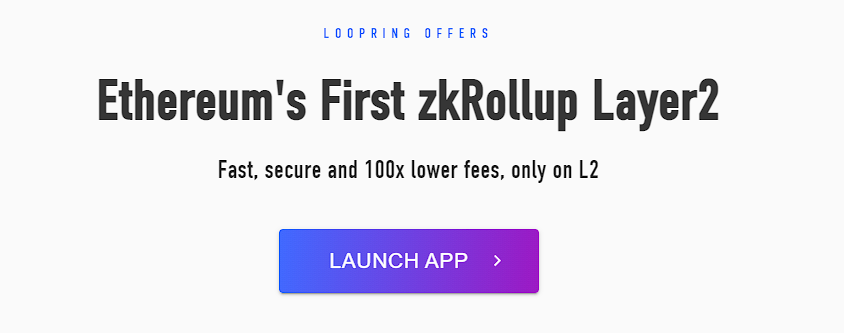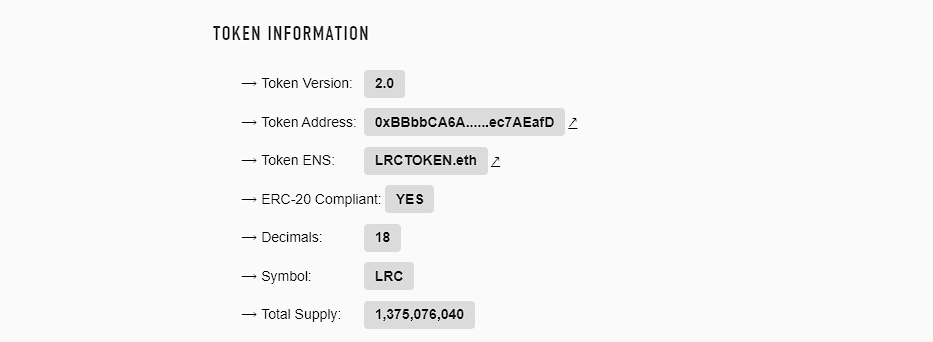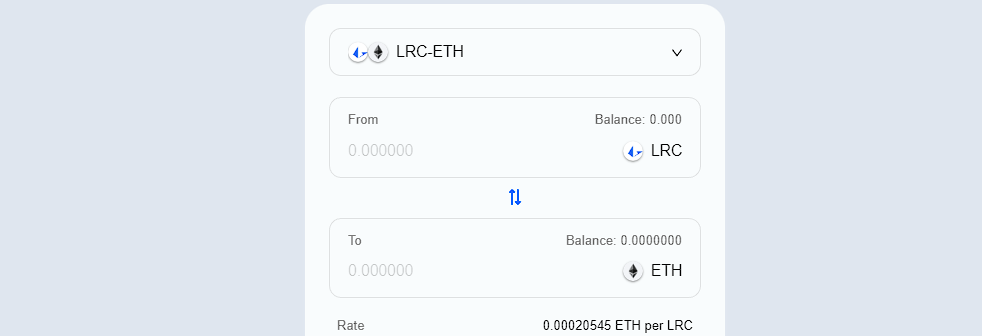
Loopring is a layer-2 zkRollup exchange protocol that allows anyone to build non-custodial, orderbook-based exchanges on the Ethereum blockchain using zero-knowledge proofs.
Loopring 6 key point overview:
- ✔️What is Loopring
- ✔️Features of Loopring
- ✔️LRC token
- How to buy LRC
- Top 3 LRC wallets
- What we like about Loopring
What is Loopring

👉 Zero-knowledge proofs are an advanced cryptography technique for authentication and data verification where no data is actually shared between users.
👉 This technology is used by Loopring to bundle hundreds of transactions into one single transaction that can be processed independently from the Ethereum blockchain in a much faster and cheaper way.
👉 Before transactions can be settled on Ethereum, they need to be matched off-chain and this is done by using smart contracts on Loopring.
👉 Once the transactions have been bundled, processed and matched, they can be settled on Ethereum and approximately 2,000 trades can be settled per second this way (compared to Ethereum’s 15 TPS).
👉 Loopring is primarily used for building protocols, infrastructure and user products for FinTech and it enables high-throughput, low-cost trading and payments on the Ethereum blockchain.
👉 The Loopring exchange also offers several liquidity pools and allows users to participate in liquidity pool mining.
👉 Users can also swap and trade assets using either a simple interface or a professional interface with charts, historical data and trade management tools.
👉 The Loopring protocol was founded in 2017 by Daniel Wang, who is a software engineer that was previously employed at Google.
Features of Loopring

👉 Loopring is an open-source, non-custodial exchange that also serves as a payment protocol with high throughput, high scalability and low-cost trading.
👉 This protocol can also be used to build Ethereum-based payment applications, exchanges and NFT marketplaces, and developer guides and a Javascript SDK (Software Development Kit) is provided for ease of access.
👉 Loopring performs its core operations off-chain, which means that transactions can be processed independently from the Ethereum blockchain and up to 2,025 transactions can be settled at a much lower cost with significantly reduced gas consumption fees.
👉 The Loopring Relayer, otherwise known as the “Operator”, is a back-end system that interacts with the protocol to power the zkRollup layer and it is required for orderbook matching and proof generation.
👉 The Relayer hosts and updates the Merkle tree, creates Rollup blocks, generates zkSNARK proofs, publishes data and proofs to Ethereum, and more.
👉 This system also ensures that user funds will NEVER be accessed or frozen.
👉 As a Loopring client, you will also have access to a tier-based VIP program and you can get more out of your investments with the Loopring referral rewards program.
LRC token

👉 The LRC token is native to the Loopring protocol and it is an operational token that enables users to operate the decentralized exchange by staking either 250,000 LRC to use the on-chain dataproofs, or 1 million LRC to run an exchange without using this feature.
👉 This token also maintains the integrity of the protocol and its reputation.
👉 LRC deposits could be confiscated for exchanges that are mismanaged.
👉 Any confiscated funds will then be redistributed to users who have locked up their LRC tokens.
👉 LRC can also be staked to earn a portion of the trading fees that are paid to the protocol and approximately 70% of fees are redistributed to users who stake their tokens.
👉 Of the remaining 30%, 20% is allocated to the Loopring DAO and 10% is burned, which gradually reduces the supply of LRC and increases its price over time.
👉 There is a total supply of 1.375 billion LRC tokens.
How to buy LRC

👉 The easiest way to obtain LRC is by purchasing it from major third-party exchanges, such as Binance, Coinbase Exchange or OKEx, but once you own LRC tokens, they can be staked to earn more (instead of buying more tokens).
Top 3 LRC wallets

👉 We highly recommend using the proprietary non-custodial Loopring mobile wallet as it offers special features, such as L2 scaling, gas-free trading and payments, advanced security measures and more.
👉 This wallet is powered by smart contracts and has the zkRollup built into the wallet.
👉 You can download the wallet directly from the official Loopring website.
👉 Alternatively, you can use Trustwallet, Atomic wallet or the Ledger hardware wallet if you prefer to use third-party wallets.
What we like about Loopring
👉 What we like most about Loopring is that it’s straightforward, ethical and multi-functional.
👉 This protocol offers the security and smart-contract-powered innovation of Ethereum, but with much higher throughput and significantly lower costs.
👉 Investors and crypto enthusiasts can participate in several liquidity pools and mining pools without worrying about transactions being delayed or congested.
👉 Developers now have the freedom to create their own non-custodial exchanges by combining the best of both Ethereum and Loopring.
👉 We look forward to seeing what the future holds for Loopring!
Table of Contents



